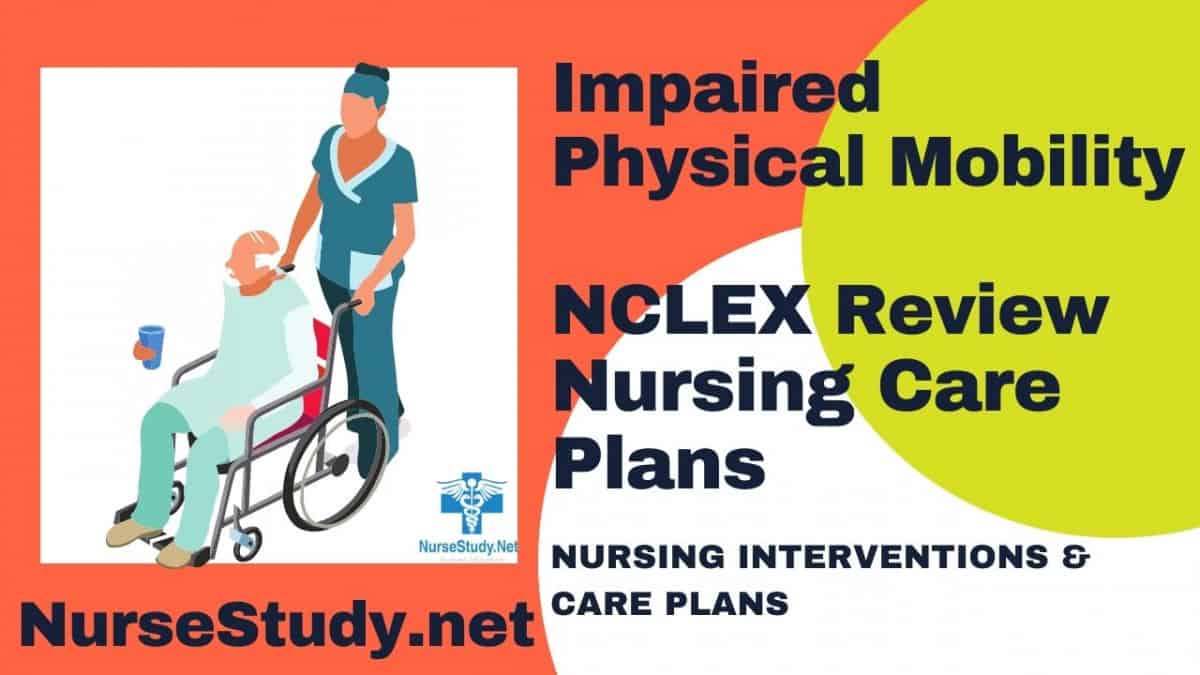Impaired physical mobility represents a significant nursing diagnosis that impacts patient care across various healthcare settings. This comprehensive guide explores the assessment, intervention strategies, and care planning necessary for managing patients with mobility challenges.
Understanding Impaired Physical Mobility
Impaired physical mobility occurs when an individual experiences limitations in independent, purposeful physical movement of the body or one or more extremities. This condition significantly impacts quality of life and can lead to various complications if not properly managed.
Risk Factors and Related Conditions
Common factors contributing to impaired physical mobility include:
- Musculoskeletal disorders
- Neurological conditions
- Post-surgical recovery
- Chronic pain conditions
- Respiratory disorders
- Cardiovascular diseases
- Age-related changes
- Obesity
- Cognitive impairment
- Medication side effects
Clinical Manifestations
Subjective Indicators:
- Reports of pain during movement
- Expressed fear of falling
- Verbalized difficulty with daily activities
- Feelings of frustration or helplessness
Objective Indicators:
- Decreased range of motion
- Muscle weakness or atrophy
- Gait abnormalities
- Balance impairment
- Difficulty with transfers
- Reduced coordination
- Decreased endurance
- Presence of contractures
- Need for assistive devices
Nursing Assessment
Primary Assessment Components
Physical Evaluation
- Muscle strength and tone
- Range of motion
- Balance and coordination
- Gait analysis
- Current mobility level
- Pain assessment
Functional Assessment
- Activities of daily living
- Transfer capabilities
- Use of assistive devices
- Safety awareness
- Environmental barriers
Risk Assessment
- Fall risk evaluation
- Skin integrity
- Nutritional status
- Cognitive function
- Support system availability
Nursing Interventions
1. Mobility Enhancement
- Progressive mobility program
- Range of motion exercises
- Strength training activities
- Balance improvement exercises
- Gait training
2. Safety Measures
- Fall prevention protocols
- Environmental modifications
- Proper use of assistive devices
- Emergency response planning
- Regular safety assessments
3. Pain Management
- Medication administration
- Non-pharmacological interventions
- Position changes
- Comfort measures
- Pain assessment and monitoring
4. Patient Education
- Safe movement techniques
- Use of assistive devices
- Exercise program instructions
- Fall prevention strategies
- Energy conservation methods
Nursing Care Plans
Care Plan 1: Acute Post-operative Mobility Impairment
Nursing Diagnosis Statement:
Impaired Physical Mobility related to postoperative pain and surgical restrictions
Related Factors/Causes:
- Surgical incision
- Pain and discomfort
- Movement restrictions
- Prescribed bed rest
- Presence of medical devices
Nursing Interventions and Rationales:
- Assess pain levels q4h and administer prescribed pain medication
Rationale: Adequate pain control enables participation in mobility activities - Perform ROM exercises every shift
Rationale: Maintains joint mobility and prevents contractures - Assist with prescribed early mobilization protocol
Rationale: Promotes recovery and prevents post-operative complications
Desired Outcomes:
- The patient will demonstrate progressive improvement in mobility
- The patient will maintain optimal joint function
- The patient will participate in prescribed mobility activities
Care Plan 2: Chronic Neurological Impairment
Nursing Diagnosis Statement:
Impaired Physical Mobility related to neuromuscular dysfunction
Related Factors/Causes:
- Multiple sclerosis
- Muscle weakness
- Spasticity
- Balance impairment
- Fatigue
Nursing Interventions and Rationales:
- Implement an individualized exercise program
Rationale: Maintains muscle strength and prevents deconditioning - Provide assistive devices and mobility aids
Rationale: Promotes independence and safety during movement - Schedule activities during peak energy periods
Rationale: Maximizes participation and effectiveness of interventions
Desired Outcomes:
- The patient will maintain an optimal level of independence
- Patient will demonstrate the safe use of assistive devices
- The patient will report improved confidence in mobility
Care Plan 3: Elderly Fall Risk
Nursing Diagnosis Statement:
Impaired Physical Mobility related to age-related changes and fear of falling
Related Factors/Causes:
- Decreased muscle strength
- Impaired balance
- Visual deficits
- History of falls
- Environmental hazards
Nursing Interventions and Rationales:
- Conduct a comprehensive fall risk assessment
Rationale: Identifies specific risk factors and guides intervention planning - Implement environmental safety measures
Rationale: Reduces fall risk and promotes safe mobility - Provide balance and strength training exercises
Rationale: Improves stability and reduces fall risk
Desired Outcomes:
- The patient will demonstrate improved balance
- The patient will remain free from falls
- The patient will report a decreased fear of falling
Care Plan 4: Obesity-Related Mobility Limitation
Nursing Diagnosis Statement:
Impaired Physical Mobility related to excessive body weight and decreased endurance
Related Factors/Causes:
- Obesity
- Joint stress
- Decreased cardiovascular endurance
- Muscle weakness
- Activity intolerance
Nursing Interventions and Rationales:
- Develop a graduated exercise program
Rationale: Builds endurance and strength while preventing injury - Provide bariatric equipment as needed
Rationale: Ensures safe and appropriate support during mobility activities - Implement a nutritional support plan
Rationale: Supports weight management and improved mobility
Desired Outcomes:
- The patient will demonstrate increased activity tolerance
- The patient will participate in a regular exercise program
- The patient will show improved functional mobility
Care Plan 5: Post-Stroke Mobility Deficit
Nursing Diagnosis Statement:
Impaired Physical Mobility related to hemiplegia
Related Factors/Causes:
- Stroke
- Muscle weakness
- Impaired coordination
- Balance deficits
- Spatial awareness problems
Nursing Interventions and Rationales:
- Implement rehabilitation exercises
Rationale: Promotes neurological recovery and functional improvement - Provide positioning devices and supports
Rationale: Prevents contractures and promotes proper alignment - Teach compensatory techniques
Rationale: Enables increased independence in mobility activities
Desired Outcomes:
- The patient will demonstrate improved muscle strength
- The patient will perform self-care activities with minimal assistance
- The patient will show increased independence in mobility
References
- Amaya Villar R, Garnacho-Montero J, Rincón Ferrari MD. Patología neuromuscular en cuidados intensivos [Neuromuscular abnormalities in critical illness]. Med Intensiva. 2009 Apr;33(3):123-33. Spanish. doi: 10.1016/s0210-5691(09)70945-3. PMID: 19406085.
- Birch TB. Neuromuscular Disorders in the Intensive Care Unit. Continuum (Minneap Minn). 2021 Oct 1;27(5):1344-1364. doi: 10.1212/CON.0000000000001004. PMID: 34618763.
- Greene-Chandos D, Torbey M. Critical Care of Neuromuscular Disorders. Continuum (Minneap Minn). 2018 Dec;24(6):1753-1775. doi: 10.1212/CON.0000000000000682. PMID: 30516604.
- Marinelli WA, Leatherman JW. Neuromuscular disorders in the intensive care unit. Crit Care Clin. 2002 Oct;18(4):915-29, x. doi: 10.1016/s0749-0704(02)00020-9. PMID: 12418447.
